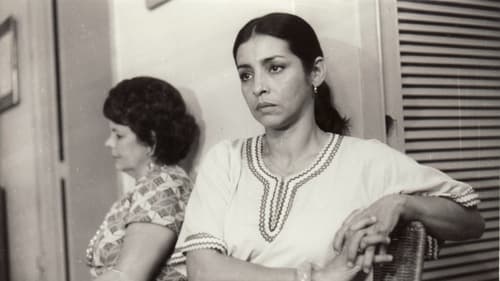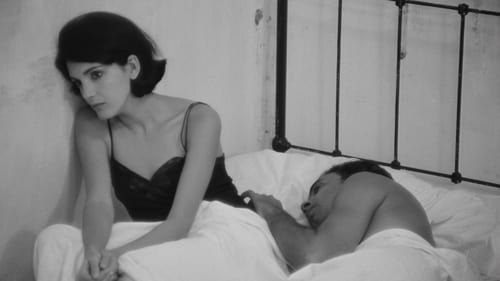Adolfo Llauradó
Рождение : 1941-09-29, Santiago de Cuba, Cuba
Смерть : 2001-11-03

Ruben lives in Cuba and Andy is exile in the United States. Both are trapped by history at opposite poles and want to change places, but they can't do it.

Matanzas, Cuba, 1913. Two young people who are in love communicate through letters written by penman. When the young man leaves town, to become a pilot, the girl discovers she is really in love with the one who wrote the letters.

An elderly man with wings is blown off course during a tropical storm in this symbolic fantasy. The Old Man lands near a Caribbean island where a poor family gives him shelter in a chicken coop. Father Gonzaga is the skeptical priest who rushes to damn the creature. Soon the Old Man is the subject of curiosity seekers as Elisinda and Pelayo start charging admission. A traveling carnival of human oddities camps near the Old Man as people flock to see the show. The Old Man is reduced to being an unwanted pet, and after six years, he mends his wings and flies away. Nudity, simulated sex with a spider woman, and the ugliness of human exploitation definitely put this fantasy in a category not for children.

A left-wing intellectual, faced with the imminence of his arrest during the coup d'état against President Joao Goulart, lives anguished moments of definition. To the collapse of his small universe is added a conjugal confrontation that unmasks him mercilessly.

1925 год. В Москву на международный шахматный турнир приезжает известный кубинский шахматист, сотрудник Министерства иностранных дел Хосе Рауль Капабланка. Поездка в условиях диктатуры Мачадо ставит под сомнение его дальнейшее прибывание на этом посту. В фильме показаны драматические поединки Капабланки с Ласкером, Тартаковером, Боголюбовым, трагическая любовь к балерине Большого театра Саше Можаевой и сеанс одновременной игры, в котором он проиграл совсем еще юному Михаилу Ботвиннику.

The first years of the Cuban Revolution characterized by social transformations and class struggles.

Carlos
The world of a young psychiatrist is shattered when she finds out that her husband is having an affair with one of her patients.

In 19th century Cuba, runaway African slaves known as 'Cimarrons' hiding in settlements in the eastern mountains. But discord among the Cimarrons is sown by a limited offer of freedom from the Spanish. Maluala is part of a trilogy of films about Cuba's slave uprisings made by Sergio Giral, the best known Afro-Cuban director.

Ramón
Teresa is overwhelmed: with a husband, three young sons, a job as a crew leader in a textile factory, and volunteer commitments as cultural leader of her union. Her husband, Ramón, wants more of her attention; her feelings are mixed, wanting domestic peace, feeling responsibilities to the revolution, and wanting to control her own life beyond doing dirty dishes. They separate; he begins an affair. When he wants a reconciliation, she asks what his response would be if she'd had an affair too. "But men are different," is his reply. He's failed her test, and to hold on to independence and self-respect, she remains uncompromising and hard-edged.

Based on the novel Francisco by Anselmo Suárez y Romero, "The Other Francisco" is a socio-economic analysis of slavery and class struggle through the retelling of the original novel. The film contrasts the romantic conceptions of plantation life found in Suárez Romero's novel with a realistic expose of the actual historical conditions of slavery throughout the Americas. It offers a critical analysis of the novel, showing how the author's social background led to his use of particular dramatic structures to convey his liberal, humanitarian viewpoint.

1964, in the Escambray mountains: the area is infested with counter- revolutionary bands which are trying to spread terror among the population and re-establish contact with the US, CIA. The murder of a man led to a reprisal to wipe out the bandits.

Felipe
This Cuban feature examines the circumstances arising out of a woman's claim to have seen the Virgin Mary and to have been healed by waters from a nearby stream. In an accelerating storm of cynical opportunism, her sincere beliefs are exploited by businessmen, politicians and military men. Rival groups compete to exploit the hysteria the vision causes, and the chaos culminates in a revolution. Striking imagery and skillful camerawork enhance this feature.

Cuban peasants wield machetes in a violent uprising against Spanish authorities in the late 19th century.

Tomas
История борьбы кубинского народа за свою независимость показана через судьбы трех женщин. Героиня первой новеллы вынуждена предать родных ради любви к испанскому солдату. Героиня второй новеллы вынуждена уйти из семьи ради любви. И, наконец, героиня третьей истории пытается отстоять свое право работать в колхозе.

A young girl joins the guerrilla

(segment "Año Nuevo")
Фильм состоит из трех новелл: «РАБОЧИЙ ДЕНЬ» : Свой рабочий день начальник полицейского участка начинает вечером сбором дани в пользу полиции со всех увеселительных заведений. Но иногда приходится работать и днём: разгонять демонстрацию студентов. «ЖЕНИХ И НЕВЕСТА»: Юный кубинский патриот Хулиан убил полицейского и спасается от преследования полиции у товарищей из подпольной группы. Решено его и Марию утром под видом жениха и невесты переправить в горы. «НОВЫЙ ГОД»: В ночь на 1 января 1959 года три палача Батисты истязают в тюремных застенках попавшего к ним молодого борца за революцию. Под пытками юноша умер. Но до палачей докатилась весть о том, что Батиста пал, что победила революция. Попав в руки революционеров, они тщетно пытались доказать, что действовали по принуждению.














